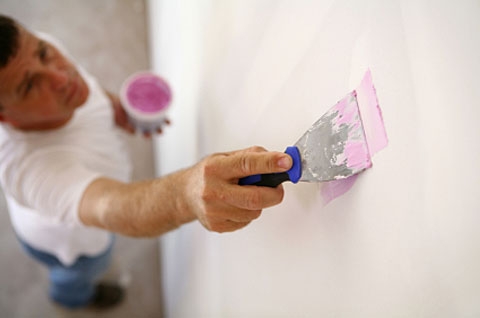How to Prepare Surfaces for Paint

Contrary to what you might think, painting any surface is not as simple as using a brush and a paint bucket. You have to actually invest time and effort into preparing the surface before painting it in order to get the best results. There is no point to repainting a surface if you have to do it again or it didn’t take as you had expected. So taking the time to prep the surface properly before you begin the painting process will make it look beautiful, protect the surface painted and will last a lot longer.
Recommended tools:
pressure washer
paint scraper
utility knife
caulking gun
Materials needed:
sandpaper (80 and 120 grit)
silicone caulk
masking tape
wood filler
heat gun
Instructions
-
1
For hard exterior surfaces use a pressure washer to clean the surface and dislodge any loose paint. Allow the area to dry before continuing any other preparation work.
-
2
Use a paint scraper to remove any loose paint that was not removed during the pressure washing. Be careful not to damage the surface with overly aggressive scraping. Use a flat file to sharpen the edge occasionally to keep the scraper sharp.
-
3
Remove loose paint in hard-to-reach areas with a detailed scraper.
-
4
Using a palm sander with 80-grit sandpaper, smooth out rough surface areas and edges.
-
5
Purchase or make your own blocks from fouls, wood scraps, garden hose or other household materials. Use these sanding blocks with 80 to 120-grit sandpaper to remove paint and smooth ridges.
-
6
Check surfaces closely for cracks, rock or other damage. Mark damaged areas with coloured pushpins or tape so you can find them when making the repairs.
-
7
Use caulk, wood fillers or other appropriate materials to repair cracks, holes and other damage.
-
8
Use of finishing Sander with 120-grit sandpaper to Sandown ridges and hard edges left from the scraping process, creating a smooth surface.
-
9
Use a coarse abrasive pad or 150 great sandpaper disc golf sand glossy surfaces on doors, window casings and surfaces painted with enamel. This creates better bonding surfaces.
-
10
Use paintable, silicone caulk for filling cracks in siding and gaps around windows and doors.







